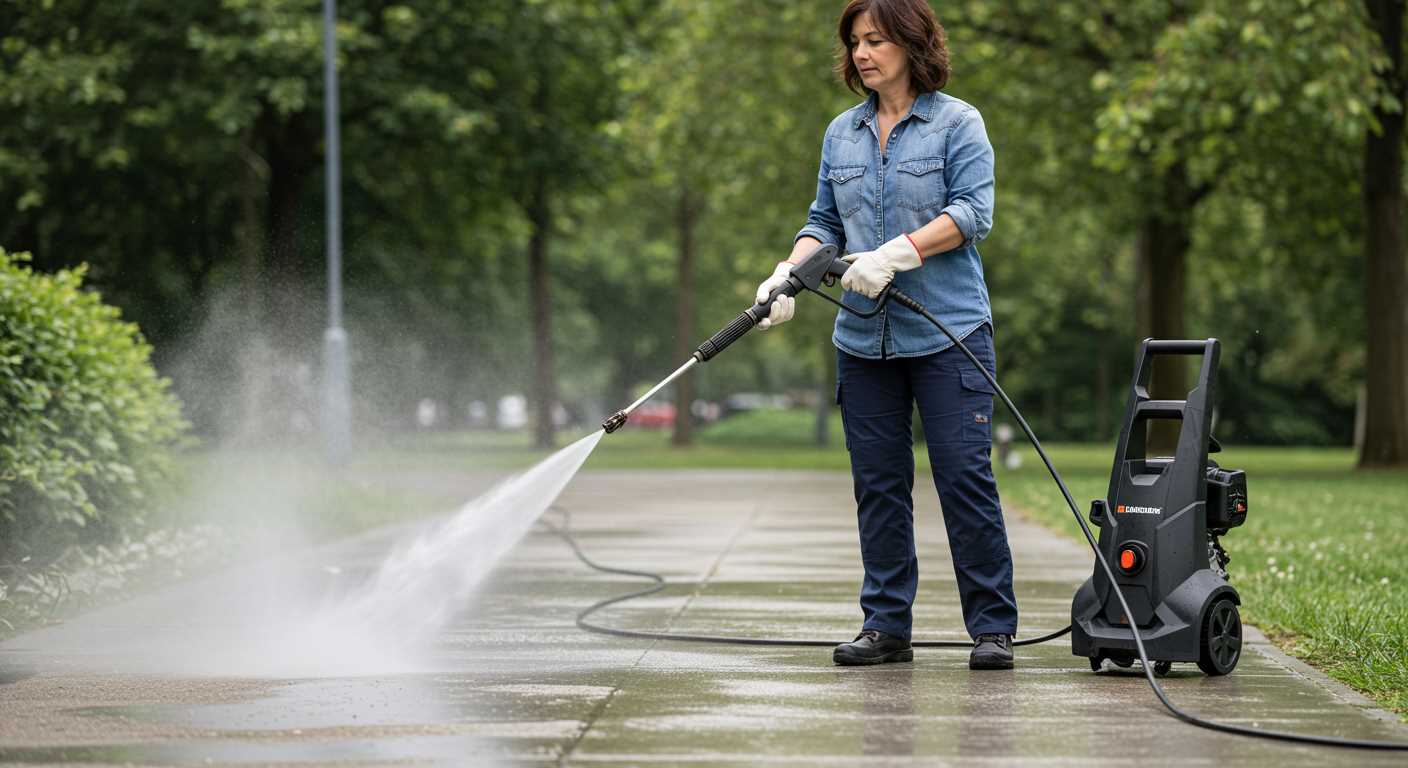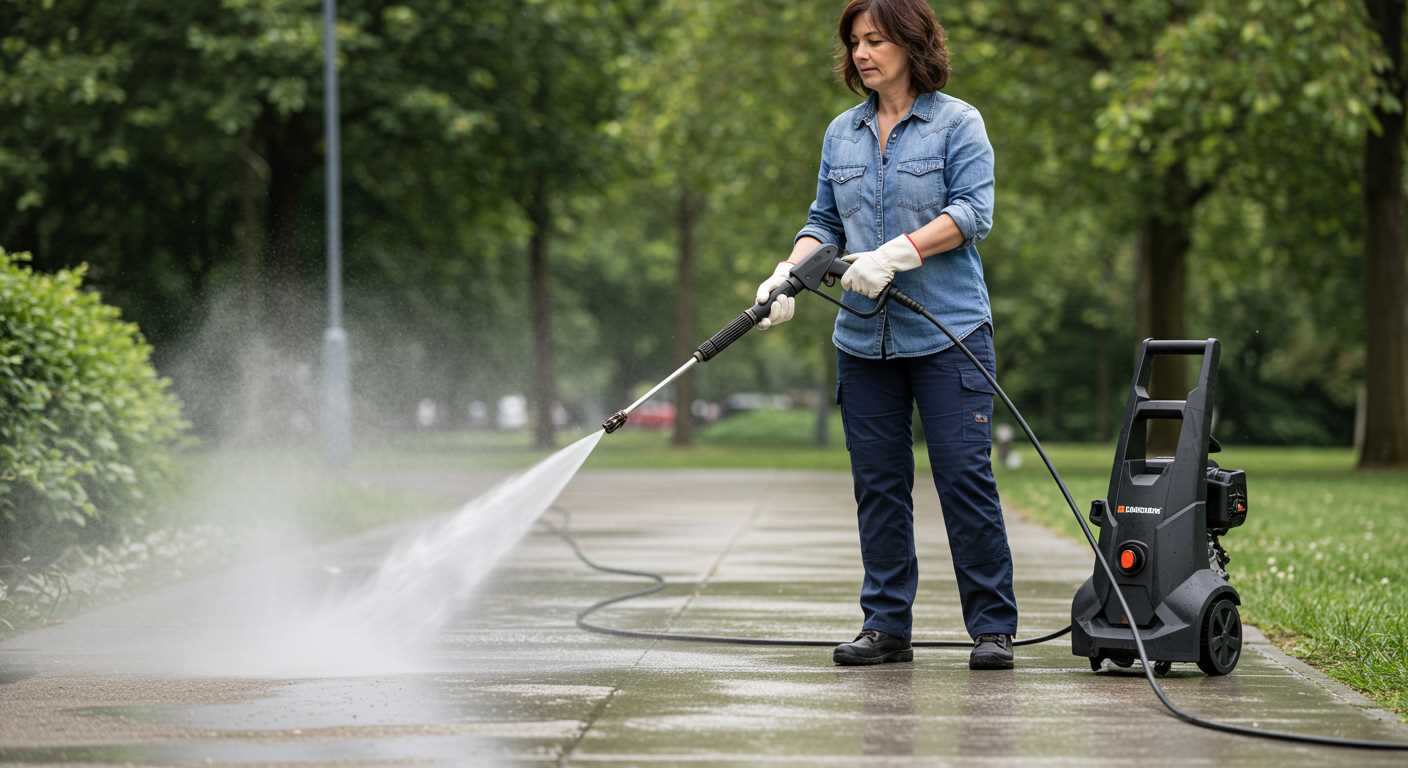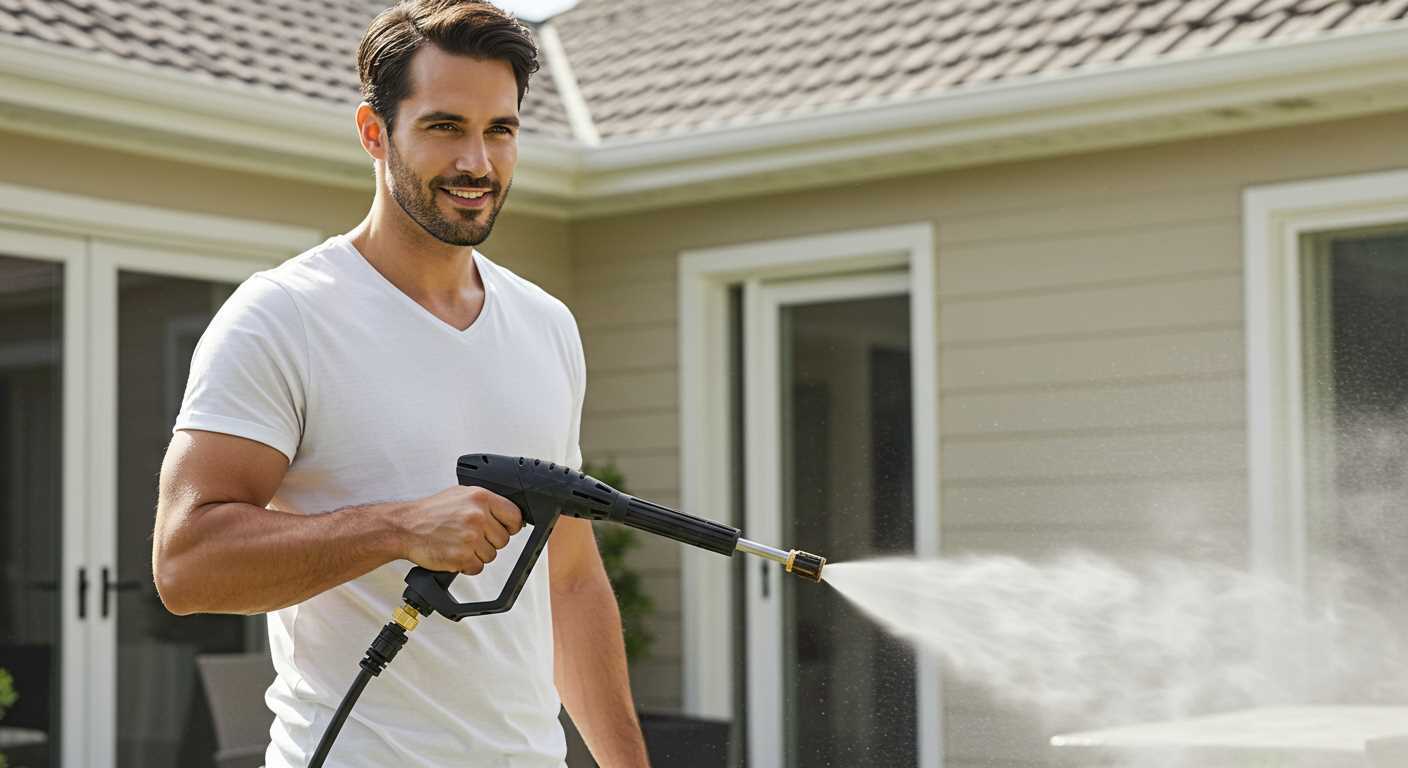




Choosing the right nozzle for your high-pressure cleaner can make a world of difference in your cleaning tasks. I recall a client who struggled with grime on her patio for months, using the wrong attachment. Once I swapped it out for the correct one, the transformation was immediate. The right fitment can enhance efficiency and achieve results that simply can’t be matched with improper tools.
First, consider the connection type of your machine. Most models utilise either a quick-connect or screw-on system. I’ve encountered numerous situations where customers overlooked this detail, leading to frustrating experiences. Always check your user manual for specifications on compatibility before making a purchase. Having the right adapter can save time and effort.
Next, assess the nozzle sizes available. A standard size for many units is 1/4 inch, but this isn’t universal. I’ve seen various brands with unique dimensions. It’s worth measuring your existing nozzles or referring to the manufacturer’s guidance to ensure a snug fit. Each nozzle size often corresponds to specific pressure ratings, which can dramatically impact cleaning power.
Lastly, don’t forget about the spray patterns. Different attachments provide varying degrees of intensity and coverage. I’ve witnessed customers achieve spectacular results simply by switching to a wider fan nozzle for larger areas or a more concentrated jet for stubborn stains. Understanding these variations can help you select the optimal nozzle for your specific cleaning needs.
Understanding Pressure Washer Connection Types
To determine the right connection type, start with the nozzle fitting. Most units use quick-connect fittings, which allow for easy swapping. Measure the diameter of the fitting–common sizes are 1/4 inch and 3/8 inch. This measurement helps in identifying compatible nozzles and accessories.
Next, inspect the hose connection. The most frequent types are M22 threaded connectors and quick-connect fittings. M22 is typically used in electric models, whereas gas-powered machines may utilise different configurations. Verify the thread size and type to avoid mismatches.
Also, pay attention to the lance or wand fittings. Many manufacturers design proprietary lances that only fit their models. It’s wise to consult the user manual for specifications. This information ensures you’re not left with incompatible attachments.
In my experience, I once bought a replacement nozzle that looked perfect but didn’t fit. It taught me the importance of checking specifications. Always confirm the manufacturer’s recommendations before making a purchase. For example, if you’re looking for cleaning techniques for specific surfaces, you can read about how to clean a new fish tank for additional insights.
Lastly, consider the accessory compatibility. Some machines allow for certain attachments, like surface cleaners or foam cannons, but only if the connection types align. Keeping a list of your equipment’s specifications can save time and hassle when shopping for new tools.
Identifying M22 and 1/4 Inch Quick Connects
To distinguish between M22 and 1/4 inch quick connects, start by examining the connector’s shape and threading. M22 connectors feature a slightly wider and more robust design, typically with a 22mm outer diameter. The threads are often coarse, making them easy to identify. A common mistake is confusing these with smaller quick connects, which can lead to compatibility issues.
Visual Cues

Look for specific markings. M22 connectors usually have markings, such as “M22” or “22mm,” engraved on the metal for easy identification. Conversely, 1/4 inch quick connects are more compact and have a narrower profile, measuring approximately 6.35mm. These fittings often have a smooth, rounded appearance without prominent threading.
Compatibility Checks
When attaching accessories, ensure that the fitting matches correctly. M22 connectors will not fit 1/4 inch quick connects and vice versa. If you have an adapter, confirm that it is specifically designed for your type of connector. During my years in the field, I often encountered customers who purchased the wrong accessories due to oversight in checking these details. Always double-check your measurements to avoid frustration later.
Matching Nozzle Sizes to Your Pressure Washer
Choosing the right nozzle size can dramatically enhance the cleaning performance of your equipment. I’ve seen first-hand how the wrong nozzle can turn a simple task into a frustrating experience. For instance, using a nozzle that’s too wide may leave dirt behind, while a nozzle that’s too narrow can damage surfaces. The key is to match the nozzle size with the specifications of your machine.
Understanding Nozzle Sizes
Nozzles are typically classified by their orifice size, which is measured in inches. The smaller the orifice, the more concentrated the spray and the higher the pressure. Conversely, larger orifices disperse water over a wider area at a lower pressure. Here’s a quick reference table for common nozzle sizes and their applications:
| Nozzle Size (Orifice) | Pressure Rating (PSI) | Application |
|---|---|---|
| 0.025 inches | up to 4000 PSI | Heavy-duty cleaning, removing stubborn stains |
| 0.035 inches | up to 3000 PSI | Mild cleaning, ideal for tough surfaces |
| 0.045 inches | up to 2000 PSI | General cleaning, suitable for cars and patios |
| 0.065 inches | up to 1500 PSI | Light-duty cleaning, perfect for delicate surfaces |
Practical Tips for Selecting Nozzles
When selecting nozzles, I always recommend checking the manufacturer’s specifications for your particular unit. If you have a variable pressure model, you might find that it can accommodate different nozzle sizes for various tasks. Additionally, investing in a quick-connect nozzle set allows for easy swapping based on the job at hand. During my time in the field, I often carried a selection of nozzles to adapt to different scenarios, which saved me time and improved results.
Evaluating Hose Length and Diameter Requirements
For optimal performance, selecting the right hose length and diameter is paramount. Based on my years of testing various cleaning machines, here are the key points to consider:
Hose Length
- Choose a length that allows freedom of movement. Typically, 25 to 50 feet is suitable for most residential tasks, but longer options are available for larger areas.
- Longer hoses can lead to pressure drop. If your unit operates at a high PSI, ensure the hose doesn’t exceed 100 feet to maintain efficiency.
- Consider storage and handling. A hose that’s too long can be cumbersome and may require additional management to prevent tangles.
Hose Diameter
- Most standard hoses have diameters of 1/4 inch or 3/8 inch. The larger the diameter, the more water flow it can handle, which is crucial for high-powered machines.
- For lower PSI units, a 1/4 inch diameter suffices. However, if you’re using a commercial-grade model, opt for a 3/8 inch hose to ensure optimal performance.
- Compatibility is key. Always check the specifications of your equipment to match the hose diameter with the inlet size for a proper connection.
Using these guidelines will assist in selecting the right hose for your cleaning tasks, ensuring efficiency and ease of use.
Recognising Compatibility with Accessories
Matching accessories with your cleaning equipment is straightforward once you grasp the key elements. First, always check the brand specifications. Many manufacturers provide compatibility charts for their accessories, which can save you time and frustration.
In my experience, I often encountered situations where a nozzle or attachment seemed compatible but didn’t perform as expected. This typically arose from slight differences in connection types or pressure ratings. Always ensure that the accessory can handle the same pressure output as your device. Accessories rated for a lower PSI than your machine can lead to failures or, worse, safety hazards.
Another aspect to consider is the material of the accessories. For instance, plastic connectors may work well for light tasks, but for more demanding applications, opt for metal fittings. They tend to withstand higher pressures and last longer under heavy use. I recall a time when I used a plastic quick connect on a high-usage job; it broke midway through, leading to an unnecessary delay.
Pay attention to the length and diameter of hoses as well. While a longer hose provides more reach, it can also reduce pressure if the diameter is not adequate. Having tested various combinations, I found that a 10-metre hose with a 1/4 inch diameter worked beautifully for most tasks, but switching to a thicker hose for larger jobs made a significant difference in performance.
Lastly, compatibility isn’t just about physical dimensions. Some accessories, like surface cleaners or extension wands, may require specific adapters. Always verify whether additional components are necessary for seamless integration. Investing a little time in research can prevent headaches down the line and ensure your equipment operates at its best.
Checking Manufacturer Specifications for Fitment
Always consult the manufacturer’s specifications for your cleaning equipment. Each model has distinct requirements that dictate compatibility with various attachments and accessories. For instance, I remember a client who purchased a new high-pressure system but overlooked the specific nozzle size mentioned in the manual. This mistake led to inefficient cleaning and frustrations that could have been easily avoided.
When reviewing the documentation, focus on the connection types and sizes listed. Most manufacturers provide detailed diagrams illustrating compatible hoses and nozzles. Pay particular attention to the pressure ratings; using accessories that exceed the rated capacity can lead to equipment failure and potential safety hazards.
If the manual is unavailable, check the manufacturer’s website. Many companies maintain online databases where you can input your model number to retrieve the necessary specs. I once helped a friend who was unsure about his unit; within minutes, we found the relevant information online, allowing him to order the right fittings without any hassle.
Keep in mind that some manufacturers offer customer support through chat or phone. Don’t hesitate to reach out; their expertise can clarify any doubts you may have regarding compatibility. I have found that direct communication often reveals insights that manuals might not cover thoroughly.
Lastly, consider the age of your equipment. Older models might have specific parts that are no longer in production, making it crucial to check for compatibility with newer attachments. I once encountered an older cleaning unit that had unique fittings; after some research, I was able to source the right parts from a specialty retailer. This experience reinforced the importance of knowing your model’s specifications well.
Determining the Right Adapters for Your Setup
Start with the type of equipment you have. Knowing your machine’s specifications is key to finding compatible connectors. Most users overlook this and end up with mismatched accessories.
Assessing Thread Types
- Check if the connection is male or female. Mismatching these can lead to leaks or failure to connect.
- Common thread types include M22 and 1/4-inch quick connects. Ensure you have the correct size for your hoses and nozzles.
Understanding Pressure Ratings
- Adapters must support the same pressure rating as your equipment. Using an adapter rated for lower pressure can cause it to fail prematurely.
- Consult the technical data from manufacturers to verify compatibility. This can prevent costly damage to your gear.
In my experience, using adapters that are not designed for your specific model can lead to performance issues. I once tried to connect an indoor pressure washer with a generic adapter, which resulted in a frustrating leak and wasted time. Always prioritise quality and compatibility over convenience.
Lastly, keep in mind that accessories should also align with your machine’s specifications. For instance, if you’re considering an indoor pressure washer, ensure any additional tools or attachments are designed for indoor use to avoid any mishaps.
FAQ:
What factors should I consider when choosing a pressure washer fitment?
When selecting a pressure washer fitment, you should take into account the type of surface you will be cleaning, the pressure rating of the washer, and the nozzle size that matches your needs. Different surfaces, like concrete or wood, may require different pressures and nozzle types for optimal cleaning. It’s also important to consider the compatibility of the fitment with your specific pressure washer model.
How do I know if a pressure washer fitment is compatible with my machine?
To determine if a pressure washer fitment is compatible with your machine, check the specifications provided by the manufacturer. Look for details on the fitment size, connection type, and pressure ratings. Many pressure washers have standard fittings, but variations exist, so referring to the user manual or contacting customer support can provide clarity.
Can I use different nozzles with my pressure washer, and how do I choose the right one?
Yes, you can use different nozzles with your pressure washer to achieve various spray patterns and pressures. Nozzles are typically colour-coded: red for zero degrees, yellow for 15 degrees, green for 25 degrees, and white for 40 degrees. When choosing a nozzle, consider the surface you are cleaning and the level of dirt or grime. For delicate surfaces, a wider spray pattern (like the white nozzle) is usually best, while tougher stains may require a narrower spray (like the red or yellow nozzles).
What should I do if I can’t find the right fitment for my pressure washer?
If you can’t find the right fitment for your pressure washer, consider reaching out to the manufacturer’s customer service for assistance. They can help you identify the right part or suggest compatible alternatives. Additionally, local hardware stores or online retailers may carry universal fitments that can work with various models. It’s also a good idea to check online communities or forums where other users may have faced similar issues and can offer solutions.







.jpg)


